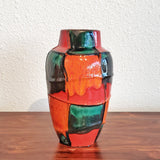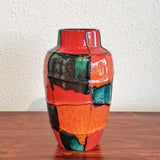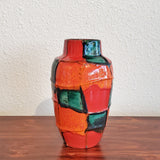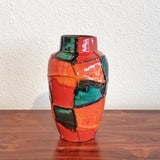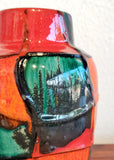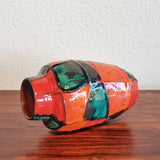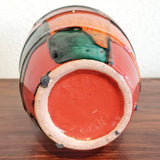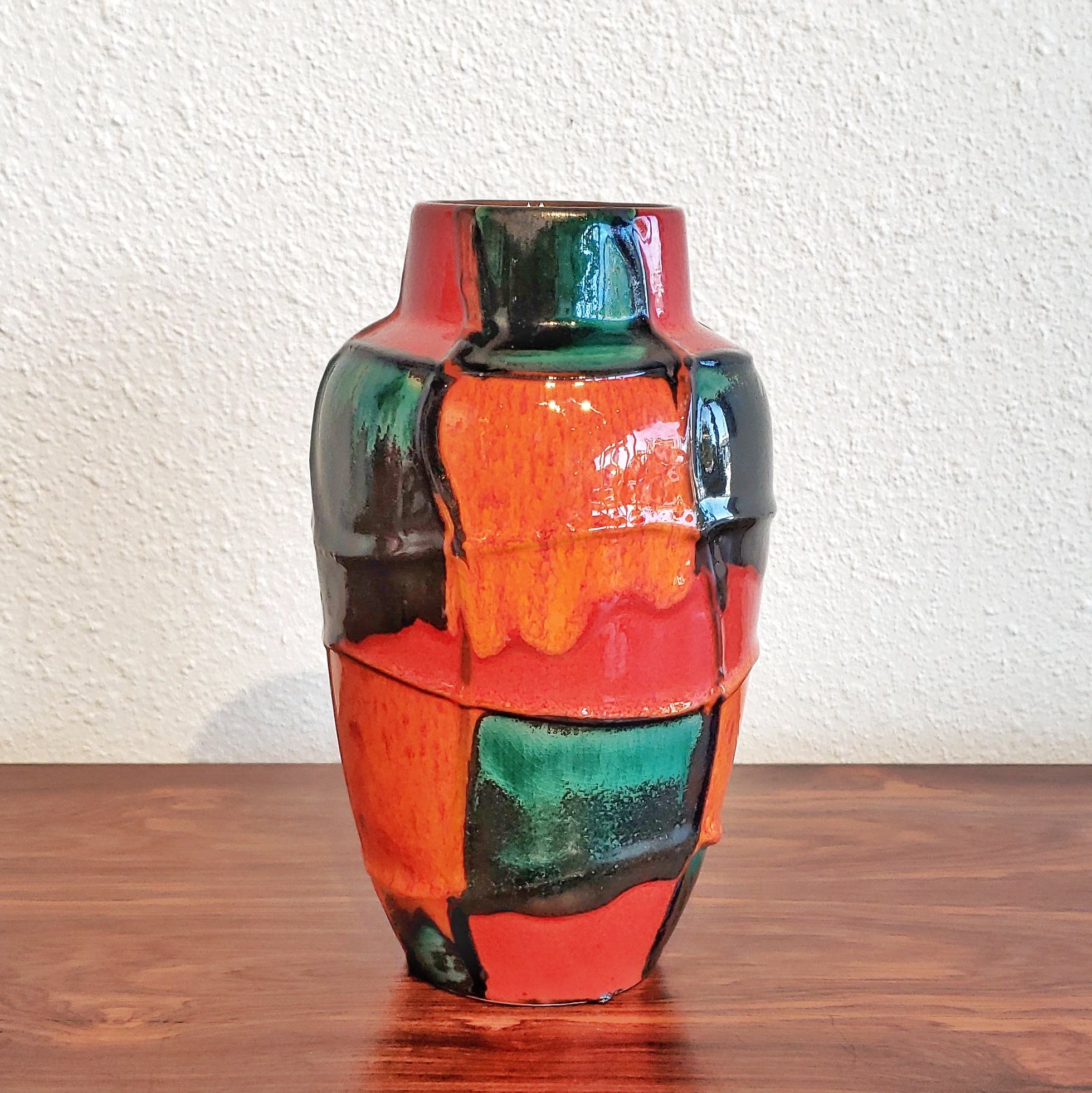
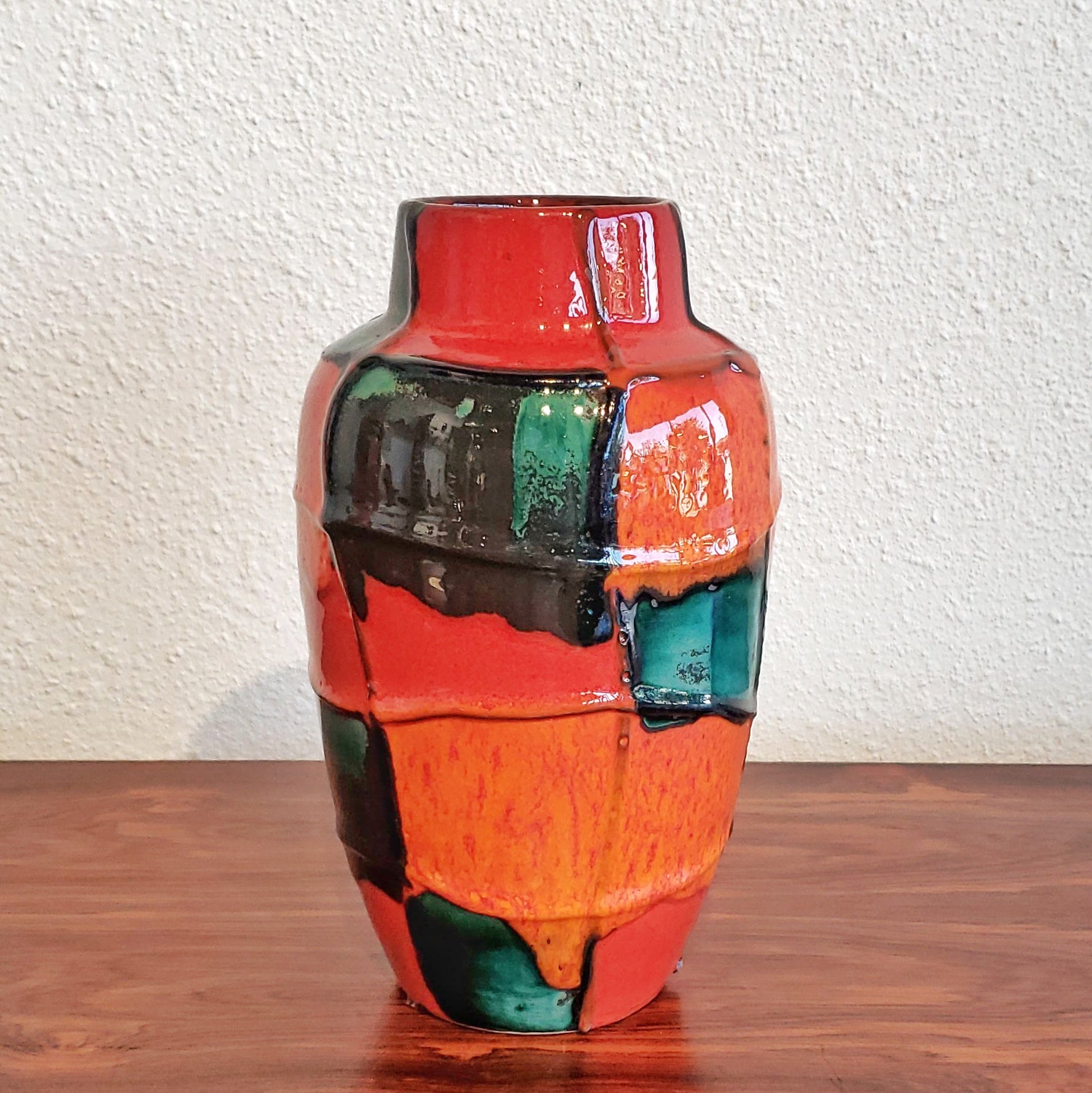
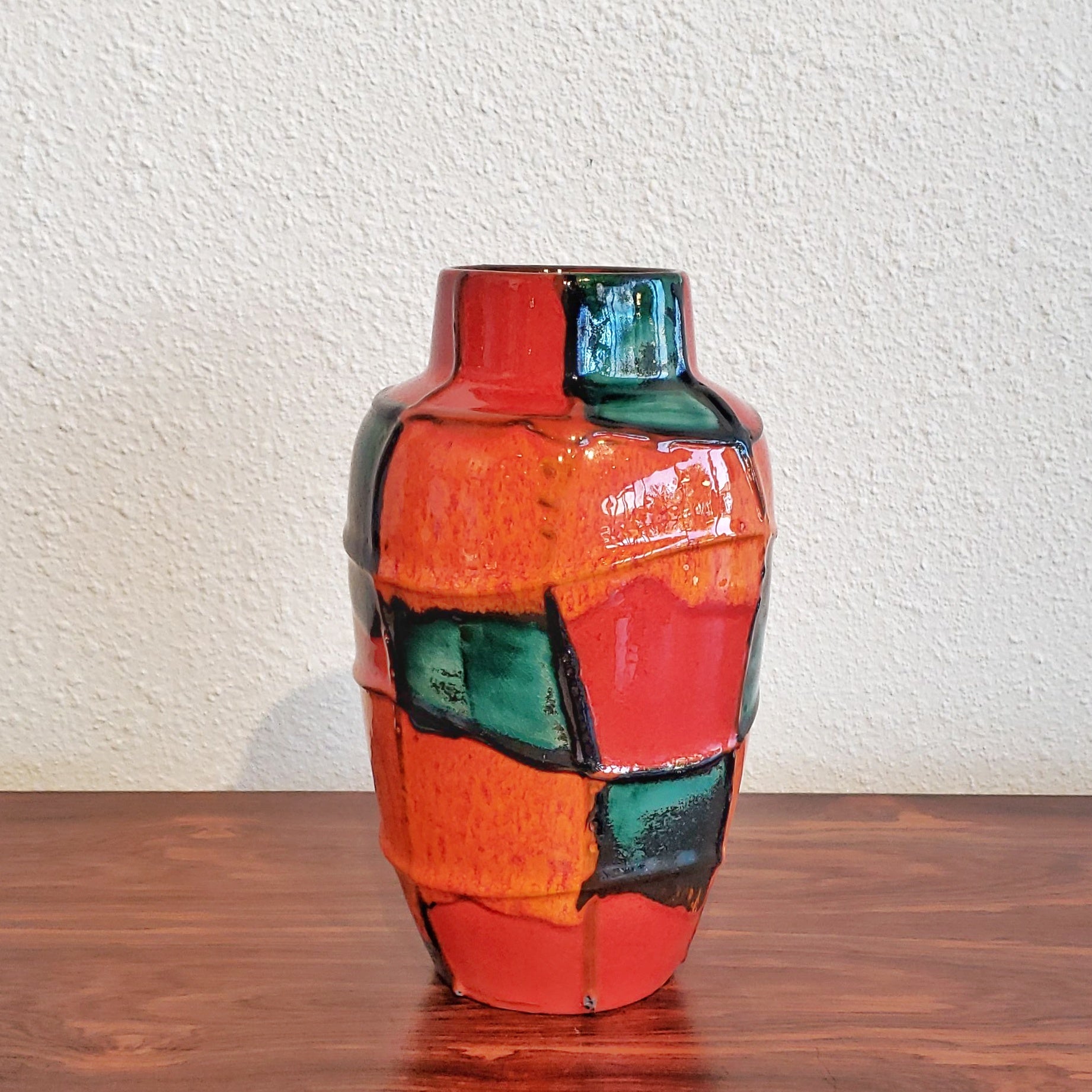
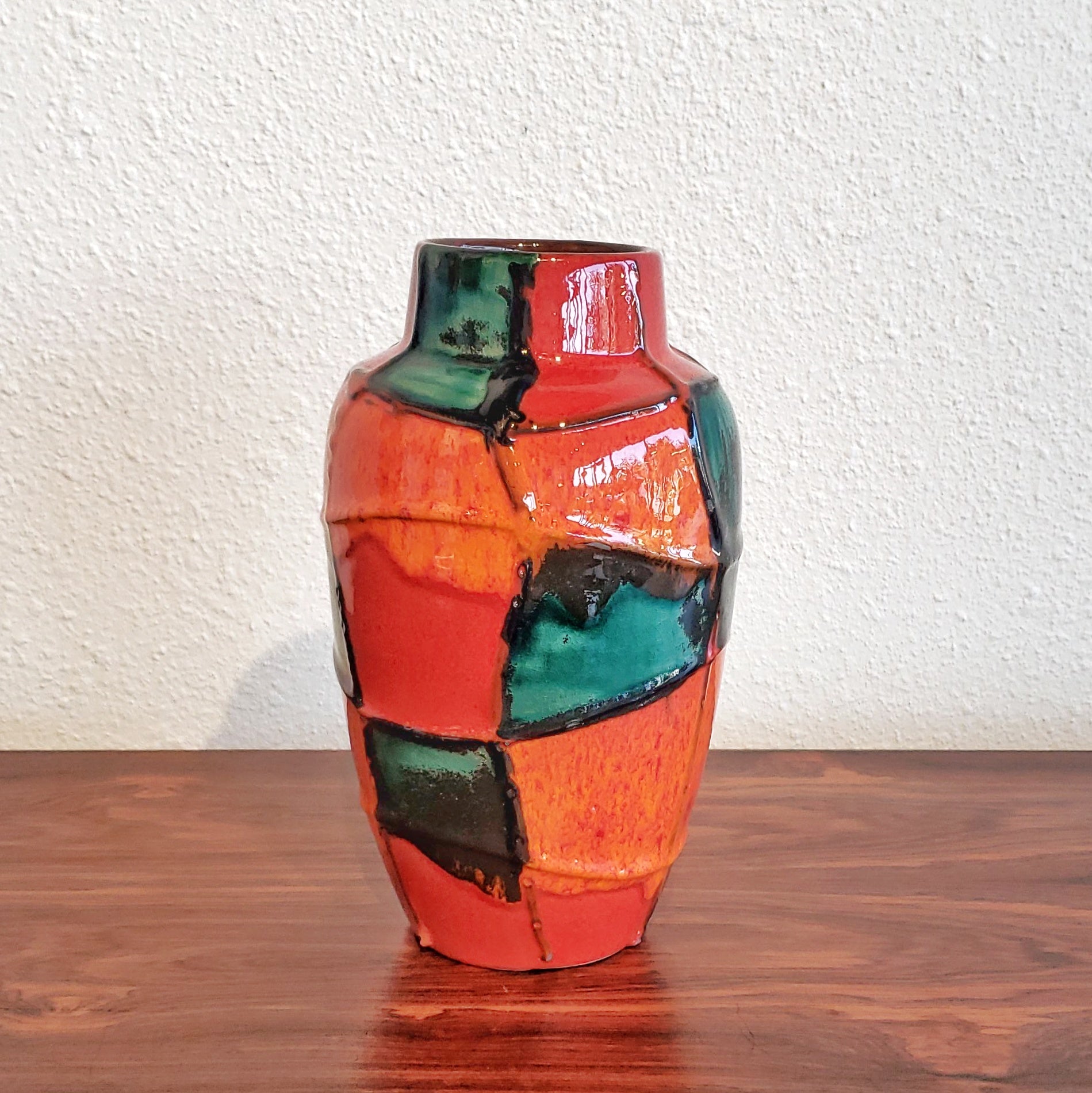
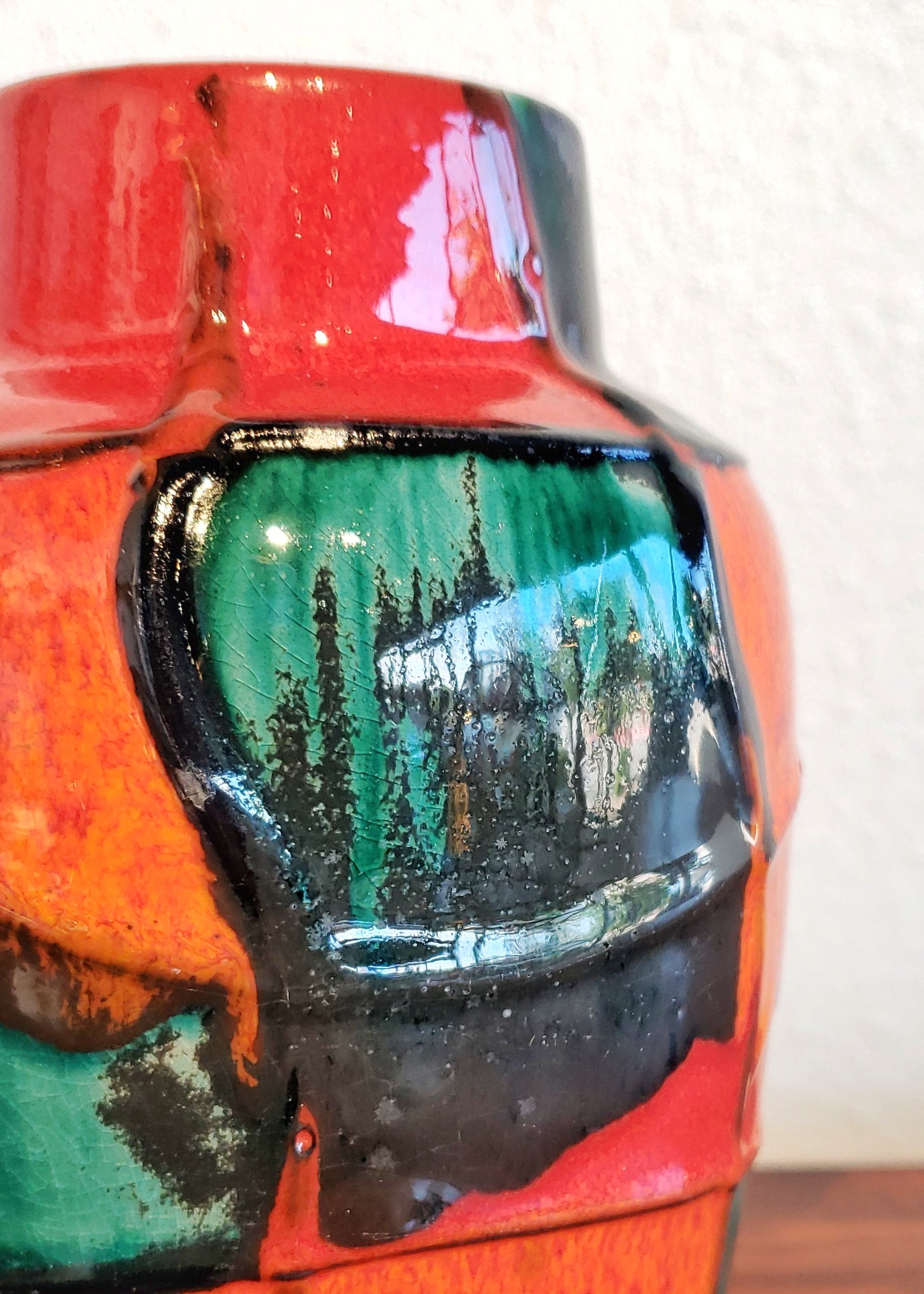
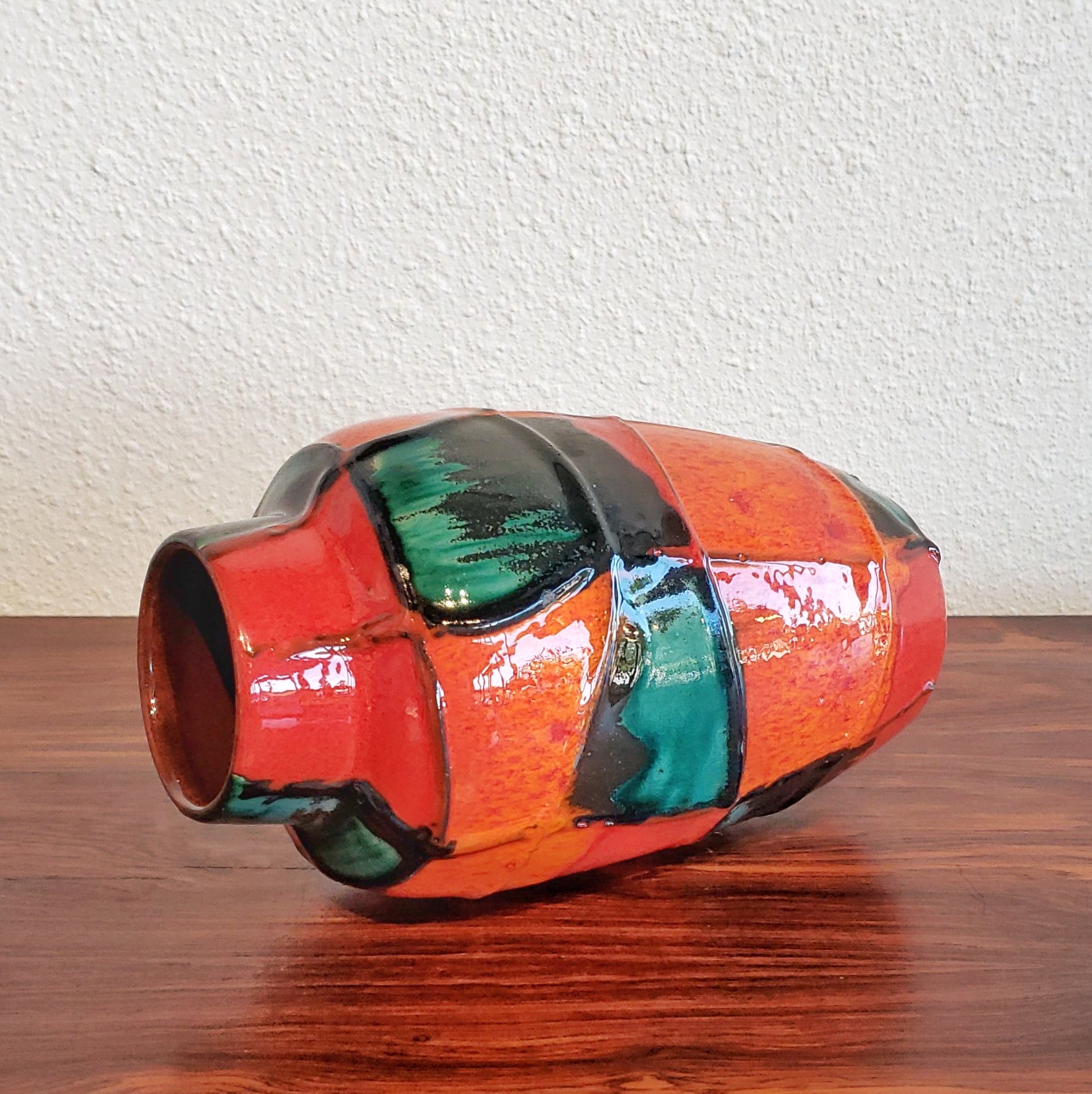
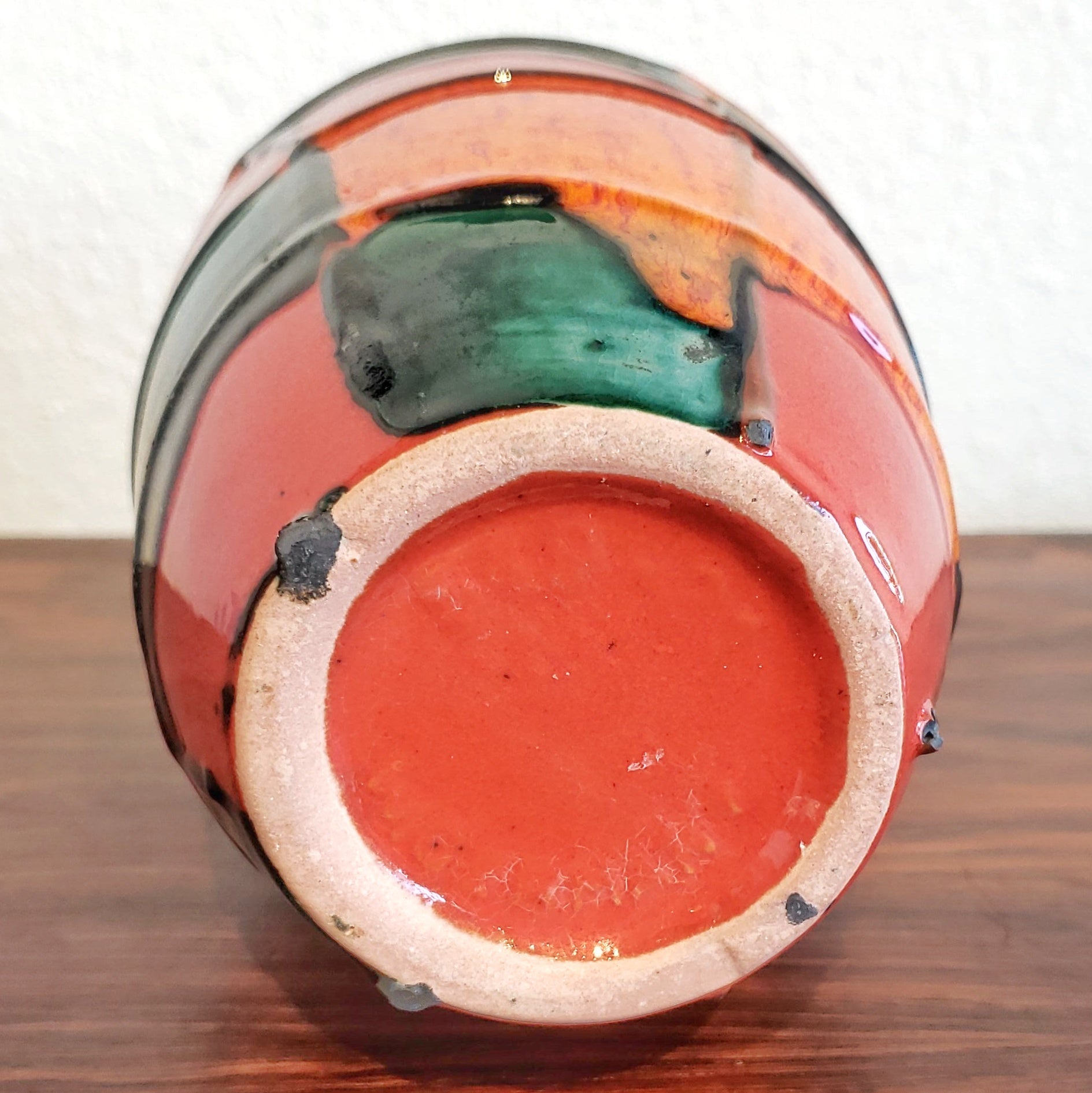
SCHEURICH KERAMIK ‘HARLEKIN’ VASE Nr. 549/21
CONTACT US HERE ABOUT THIS ITEM.
An outstanding 1960s version of Scheurich Keramik's 'HARLEKIN' decor on Heinz Siery's. shape No. 549/21
SCHEURICH had its origins in a joint venture launched in 1928 by Alois Scheurich and his cousin Fridolin Greulich in the small town of Schneeberg near the Czech border in Saxony—wholesaling glass, porcelain, and ceramics. The business was moved to the market community of Kleinheubach in the northeast corner of Bavaria in 1938, and ten years later the partners began producing household ceramics of their own, selling them under the name Scheurich & Greulich. In 1954 the partnership was dissolved, and Alois founded Scheurich GmbH & Co. KG to continue production on his own.
The celebrated designer Heinz Siery was recruited in 1955 as Scheurich’s lead form designer, but in addition to an extensive range of shapes, he was also key in helping the company develop a successful overarching production strategy, which was to produce a wide array of simple forms that could be produced cheaply and decorated in a great variety of glazes. This resulted in a range of pieces that were both varied and economically adaptable. The approach proved altogether successful and led to Scheurich’s hegemony beginning in the late 1960s. The company's strategy of keeping its prices low combined with an enormous range of attractive designs resulted in millions in sales and the designs were adapted twice a year to the changing tastes of the public.
Scheurich mainly made vases and flowerpots but also produced ashtrays, piggy banks, candle stands, beer mugs, buffet clocks, wall reliefs, and Christmas tree holders. Scheurich, with a few exceptions, did not make kitchen clocks or lamp bases.
The most successful vase models come in dozens of glaze versions (decors), for example, Heinz Siery designed vase model 271-22 in 1959 and it was fashionable for decades with a variety of changing glaze options. Another important designer for the shapes was A. Seidel. The main glaze designer was Oswald Kleudgen.
Some well-known motifs are Montignac (1972-1973; hand-painted), Amsterdam (onion motif/Zwiebeldekor; 1974-1975), Fabiola (dark brown-red overflow glaze), and Jura (fossil/snail motif).
Some designs were made especially for export purposes; on the bottom of those vases is not "West Germany", but "foreign". Nevertheless, vases with "foreign" also ended up on the home market.
The vases were fired at 1000 degrees Celsius and came from molds. The most extreme glazes and patterns remained in West Germany. Red and orange vases sold best. Yellow and purple less. Large floor vases cost 40-50 Deutsche Mark (20-25 euros) each and were for sale in the Karstadt and Kaufhof department stores. At least 500 pieces of each vase were made.
By the late 1980s, shapes and color schemes became plainer and the work less attractive to collectors.
HEINZ SIERY was a true luminary in the world of ceramics in the 1950s and '60s. His form designs had a significant impact on the product styles of makers Fohr, Scheurich, Carstens, and Ruscha, among others. Siery often employed "the golden ratio" (or an approximation) while designing, lending harmonious proportion to his work. This can be clearly seen in his most iconic vase, no. 271/22 for Scheurich. Presented in 1959, it was extremely popular and was still being manufactured in the 1970s. Siery also developed and introduced new methods of industrial organization.
In 1969 Siery and his wife, Ingrid Siery-Illgner, established a jointly operated studio, Atelier Syré, near the historic town of Euskirchen in North Rhine-Westphalia out of which they both freelanced. (Ingrid had also designed decorative objects for Carstens and overseen the design department at the Wächtersbach earthenware factory.) In addition to commissioned work, the couple produced creations of their own—notably elegant, figural sculptures made of bronze, whose simple, classical forms and sleek lines evoke the work of Henry Moore and Joannis Avramidis. Atelier Syré houses a sculpture park home to more than 300 of these works.
| Designer | Heinz Siery |
|---|---|
| Manufacturer | Scheurich |
| Design Period | 1960 to 1969 |
| Production Period | 1960 to 1969 |
| Country of Manufacture | Germany |
| Identifying Marks | This piece has an attribution mark |
| Style | Vintage, Mid-Century, Modernist, Bauhaus |
| Detailed Condition | Excellent — This vintage piece is in near original condition. It may show minimal traces of use and/or have slight restorations. |
| Product Code | |
| Materials | Ceramic |
| Color | Black, teal, orange, red |
| Width | 5.0 inch |
| Depth | 5.0 inch |
| Height | 8.5 inch |

